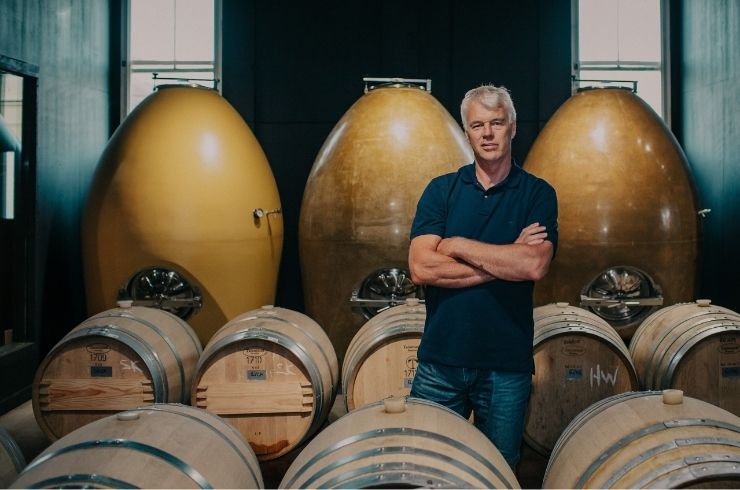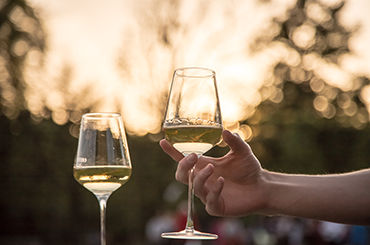If we knew then what we know now, many of Australia’s established grape varieties would never have been planted. This is a controversial statement, tendentious even, but it is true. Which brings me to those varieties better suited to a warming climate in an already dry land. As importantly, to those varieties yielding wines worth getting excited about. While it is no secret that I hold grenache in greater esteem than any other red cultivar (at least in contemporary Australian terms), fiano is among the great white hopes.

Fiano so compelling, versatile at the table and arguably the most distinguished of all white Mediterranean cultivars.
As with many southern Italian varieties, fiano’s origins are probably Greek. It is also believed to have been the grape responsible for the ancient Roman lubricant, Apianum. Yet while it is grown in Puglia and Sicily, Fiano belongs to Campania which accounts for 65 per cent of Italian plantings, grown across 900 hectares. These are largely situated in the Irpinia subregion, reaching an apogee on the elevated, volcanic sites around the township of Avellino, not too far from Naples. It is here, as a DOCG, that fiano delivers a confluence of viscosity, weight, crunchy acidity and pungent mineral undertones. Indeed, it is this uncanny meld of richness and striking freshness that makes fiano so compelling, versatile at the table and arguably the most distinguished of all white Mediterranean cultivars, alongside Roussanne and Grenache Blanc.
Fiano is late ripening and low yielding; sturdy and far from thirsty. These characteristics are not only advantageous in climates as challenging as those found throughout much of Australia, but environmentally and thus, ethically sound. Fiano’s bunches are also loosely knit, meaning that the vine is not as susceptible to fungal diseases as other varieties. With the growing risk of weather turning inclement on a dime, this is an additional benefit.
So what is it really like? At its best, fiano reels off riffs on nashi pear, citrus fruits, apricot pith, pistachio, hazelnut and wild fennel. There is ample fruit, but a whiff, too, of something cooler, herbal and complex. It’s wines are largely medium of weight, but of textural intrigue with or without oak. Fiano’s stingy yields and proclivity for turning a bronze to copper hue when fully ripe, means that it is ill suited to the early picked stretched volumes of industrial winemaking found in inland regions where results are often anodyne at best, or soul-destroying at worse. Unico Zelo’s quiver of single vineyard expressions, briny and rapier of intensity, is the exception.
Elsewhere, Chalmers draws from the most historic Italian nursery in the country to craft Fiano of considerable class in Heathcote, while expressions from Briar Ridge in the Hunter, Jericho and Dodgy Bros. in McLaren Vale, have also impressed. For lack of a better comparison, they work as a sophisticated transition from pinot gris, a variety of considerable limitations. To taste what barrel fermentation, ample time on lees, stirring, minimal sulphur additions and oak maturation can bring, check out Minim ‘Colbinabin’ Fiano and the soon-to-arrive Mani Su, both from Heathcote with the latter spending time on skins to impart salinity and greater amplitude. These are all producers that understand the importance of picking ripe on flavour and phenolics, rather than acidity.
It was Coriole’s brilliant Rubato cuvée, however, that blew my mind during the last bout of tastings for The Guide. So good is it that it was White Wine of the Year runner up and winner of Best Other White, admittedly a clumsy title. Optimal ripeness, skin contact in the press and ambient fermentation in older wood has produced a titan of a wine blaring accents of tangerine, quince, ginger and apricot pith, careening long across spicy rails of freshness. As benchmarks, the wine would be a fascinating comparison alongside Benito Ferrara Fiano di Avellino and Colli di Lapio Fiano di Avellino, both entrenched in the Campanian pantheon and best, available in Australia.
Fiano is late ripening and low yielding; sturdy and far from thirsty. These characteristics are not only advantageous in climates as challenging as those found throughout much of Australia, but environmentally and thus, ethically sound. Fiano’s bunches are also loosely knit, meaning that the vine is not as susceptible to fungal diseases as other varieties. With the growing risk of weather turning inclement on a dime, this is an additional benefit.
So what is it really like? At its best, fiano reels off riffs on nashi pear, citrus fruits, apricot pith, pistachio, hazelnut and wild fennel. There is ample fruit, but a whiff, too, of something cooler, herbal and complex. It’s wines are largely medium of weight, but of textural intrigue with or without oak. Fiano’s stingy yields and proclivity for turning a bronze to copper hue when fully ripe, means that it is ill suited to the early picked stretched volumes of industrial winemaking found in inland regions where results are often anodyne at best, or soul-destroying at worse. Unico Zelo’s quiver of single vineyard expressions, briny and rapier of intensity, is the exception.
Elsewhere, Chalmers draws from the most historic Italian nursery in the country to craft Fiano of considerable class in Heathcote, while expressions from Briar Ridge in the Hunter, Jericho and Dodgy Bros. in McLaren Vale, have also impressed. For lack of a better comparison, they work as a sophisticated transition from pinot gris, a variety of considerable limitations. To taste what barrel fermentation, ample time on lees, stirring, minimal sulphur additions and oak maturation can bring, check out Minim ‘Colbinabin’ Fiano and the soon-to-arrive Mani Su, both from Heathcote with the latter spending time on skins to impart salinity and greater amplitude. These are all producers that understand the importance of picking ripe on flavour and phenolics, rather than acidity.
It was Coriole’s brilliant Rubato cuvée, however, that blew my mind during the last bout of tastings for The Guide. So good is it that it was White Wine of the Year runner up and winner of Best Other White, admittedly a clumsy title. Optimal ripeness, skin contact in the press and ambient fermentation in older wood has produced a titan of a wine blaring accents of tangerine, quince, ginger and apricot pith, careening long across spicy rails of freshness. As benchmarks, the wine would be a fascinating comparison alongside Benito Ferrara Fiano di Avellino and Colli di Lapio Fiano di Avellino, both entrenched in the Campanian pantheon and best, available in Australia.
Sign up to view these tasting notes and ratings
By becoming a member of Wine Companion, you'll have access to the largest database of wines in Australia.







